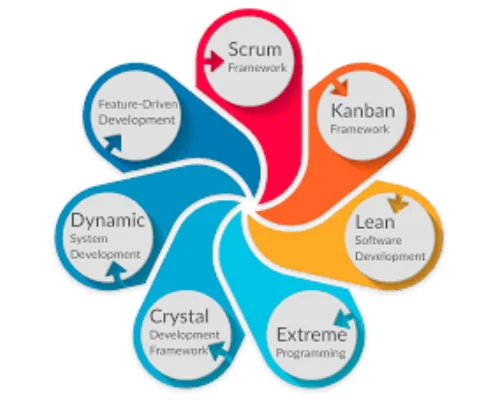Practices to Bring Agile Principles to Life
This is work in progress! in it’s first increment this page aims to provide guidance, you’ll have to do your own research! the aim is in the coming increments I will add links to resources that you can access directly from here.
1. Our highest priority is to satisfy the customer through early and continuous delivery of valuable software.
Incremental Development
Frequent Releases
Customer Reviews and Feedback
2. Welcome changing requirements, even late in development. Agile processes harness change for the customer's competitive advantage.
A Prioritised Backlog
Prototyping
Short Iterations
3. Deliver working software frequently, from a couple of weeks to a couple of months, with a preference to the shorter timescale.
Definition of "Done"
Work-in-Progress (WIP) Limits
Automated Testing
4. Business people and developers must work together daily throughout the project.
Co-located Teams
1-2-4-All
Cross-functional Teams
5. Build projects around motivated individuals. Give them the environment and support they need, and trust them to get the job done.
Team Agreements
Empowerment
Safe Environment for Feedback
6. The most efficient and effective method of conveying information to and within a development team is face-to-face conversation.
Co-located Teams
White boarding Sessions
Pairing
7. Working software is the primary measure of progress.
Definition of "Done"
Acceptance Criteria
Technical Debt Management
8. Agile processes promote sustainable development. The sponsors, developers, and users should be able to maintain a constant pace indefinitely.
Regular Retrospectives
Sustainable Pace of Work
Burn-down/Burn-up Charts
9. Continuous attention to technical excellence and good design enhances agility.
Code Reviews
Refactoring
Regular Tech Talks
10. Simplicity, the art of maximising the amount of work not done is essential.
Product Experimentation
Prioritisation Techniques
Visual Management Tools
11. The best architectures, requirements, and designs emerge from self-organising teams.
Team Autonomy
Cross-functional Teams
Encourage Ownership (Pull Vs Push)
12. At regular intervals, the team reflects on how to become more effective, then tunes and adjusts its behaviour accordingly.
Regular Retrospectives
Data Driven Continuous Improvement
Physical Improvement Board










